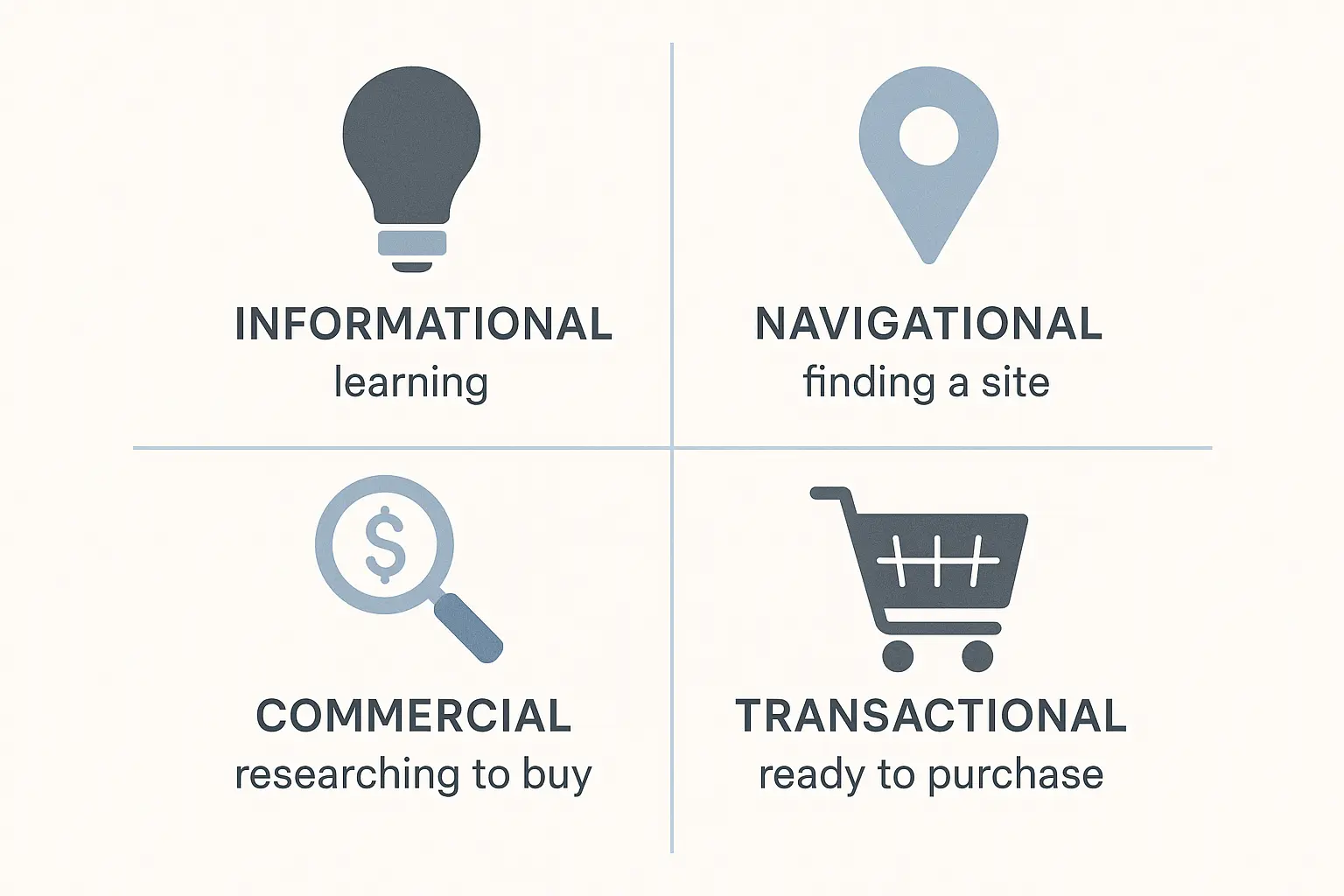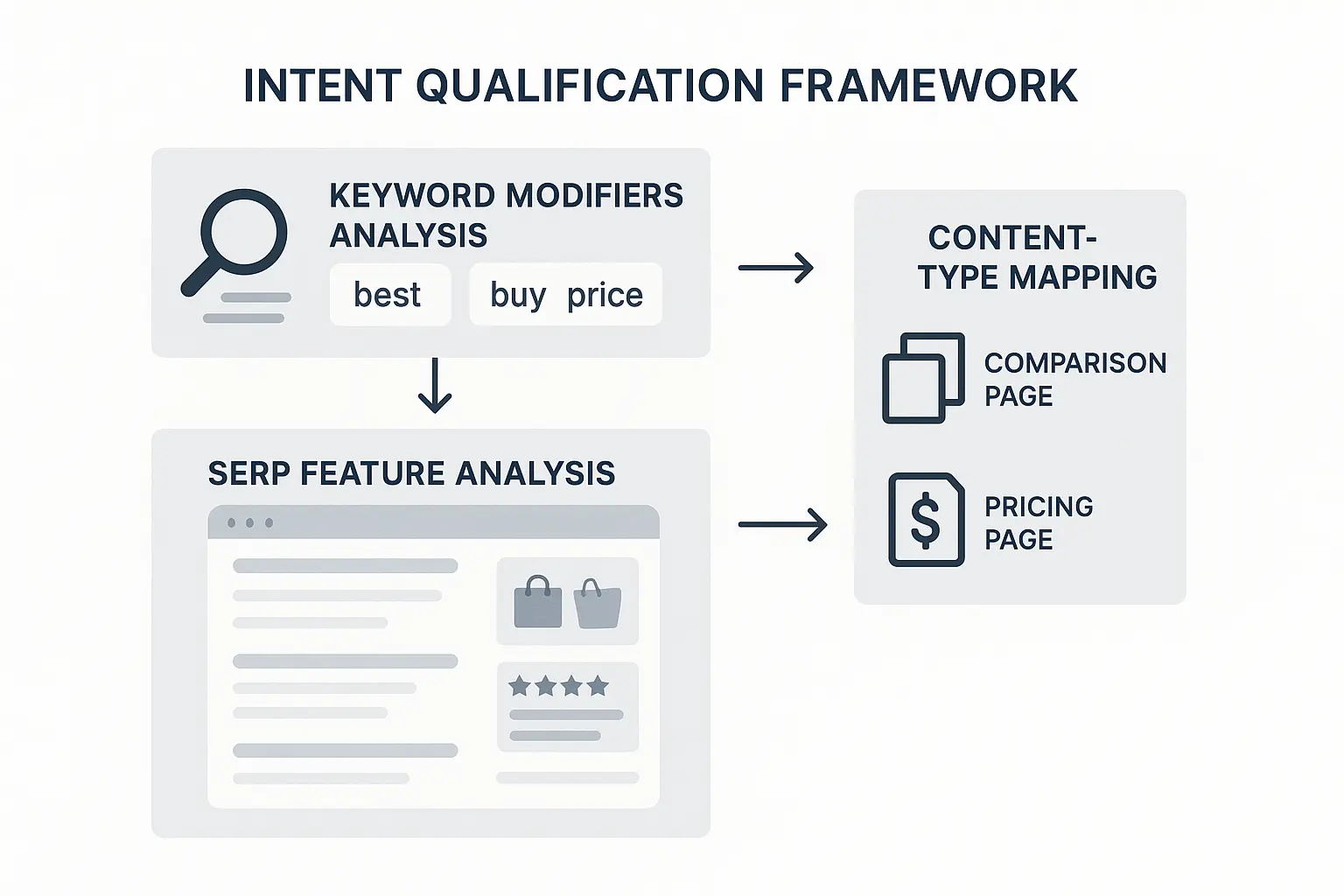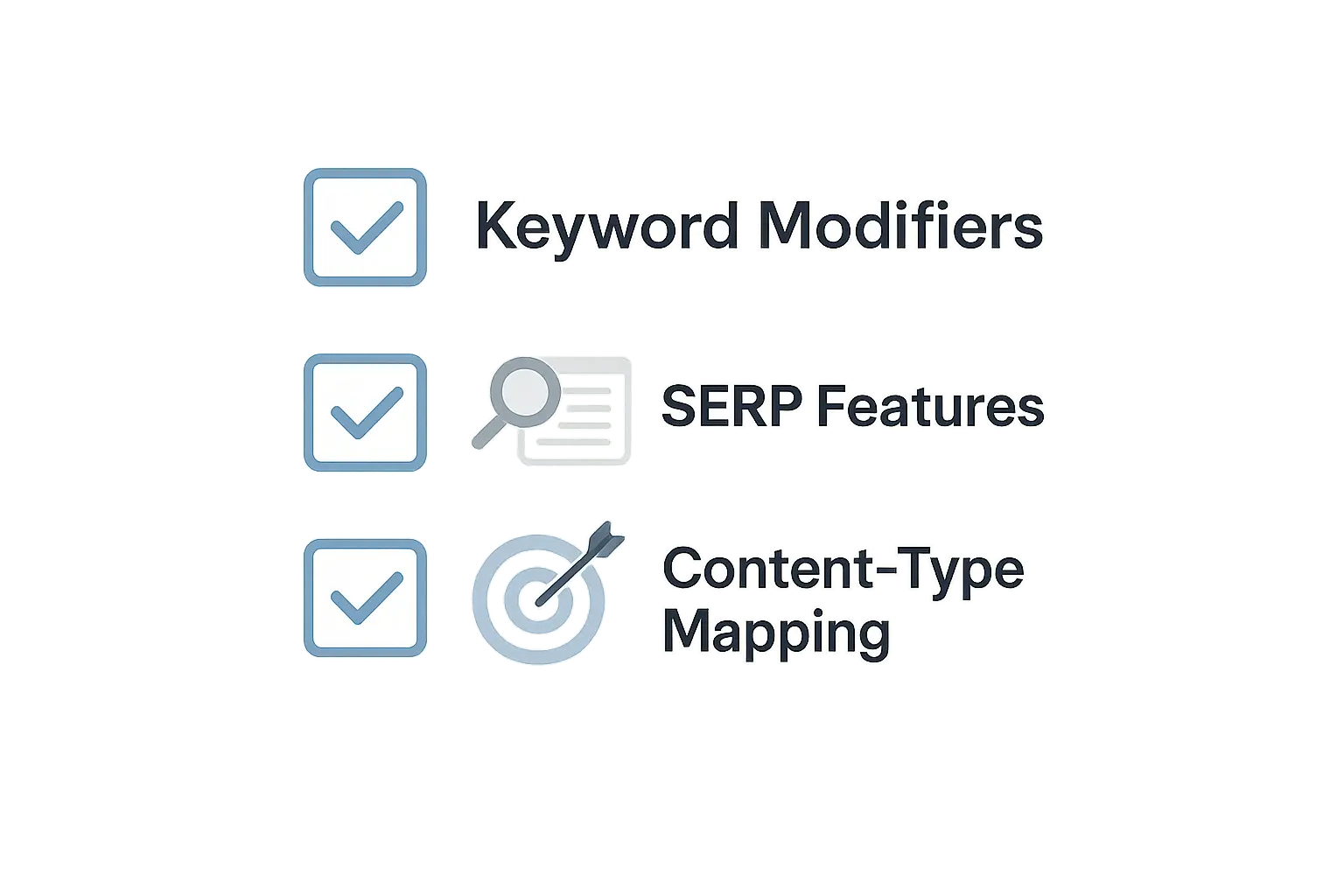You did everything right. You found a keyword with decent volume, analyzed the competition, and commissioned a 2,500-word “ultimate guide.” It took weeks to write, edit, and publish. A few months later, it’s ranking on page one and the traffic is flowing in.
But there’s a problem: not a single lead has come from it. Zero contact form submissions. Zero phone calls. Just… visitors.
If this sounds familiar, you’ve run head-first into the most common and costly mistake in content marketing: the great divide between traffic and revenue.
The digital landscape is more crowded than ever. With over 82% of marketers actively using content marketing, simply creating content isn’t enough. Cutting through the noise isn’t about producing more content; it’s about producing the right content. And that starts with understanding what your audience is truly looking for.
The Core Disconnect: Search Volume vs. Search Intent
For years, the SEO world was obsessed with search volume. It was a simple, satisfying metric. More searches meant more potential traffic, right?
But this overlooks the single most important factor in a user’s search: their intent.
Search intent is the why behind a query. Is the person looking to learn something new, find a specific website, compare options, or make a purchase right now? A keyword with 10,000 monthly searches from people just looking for a definition is far less valuable than a keyword with 10 searches from people ready to buy.
Consider this surprising finding from an Ahrefs study of 3 million search queries: a staggering 92.42% of all keywords get 10 monthly searches or fewer. The gold isn’t always in high-volume head terms; it’s hidden in long-tail queries brimming with commercial intent.
Failing to differentiate between these intents is like setting up a sales booth at a public library. You might get a lot of foot traffic, but no one is there to buy.
Decoding Search Intent: The Four Primary Categories
To build content that drives bottom-funnel results, you first need to understand the language of intent. Search queries generally fall into four main categories:
-
Informational: The user is seeking knowledge, using words like “how to,” “what is,” “why,” and “guide.” This is top-of-the-funnel (TOFU) content, designed to educate and build awareness.
-
Navigational: The user wants to find a specific website or page, searching for “JVGLABS blog” or “Twitter login.” These are usually brand-loyal users.
-
Commercial Investigation: The user is in the consideration phase. They plan to buy eventually but are comparing options first. These queries often include words like “best,” “review,” “comparison,” “vs,” and “alternative.” This is middle-of-the-funnel (MOFU) content.
-
Transactional: The user is ready to act now. They are looking to buy, hire, or sign up. These high-intent queries are laced with words like “buy,” “price,” “quote,” “sale,” or location-based terms like “near me.” This is the bottom-of-the-funnel (BOFU), and it’s where your most valuable content opportunities lie.
Each type of intent maps to a different stage of the buyer’s journey and requires a unique content approach.
But the lines can be blurry, and a single keyword can sometimes carry mixed intent. That’s why a repeatable process—a qualification framework—is essential for any agency serious about delivering measurable results.
The Keyword Intent Qualification Framework: A 4-Step Process for Agencies
This framework is your system for filtering out the noise and pinpointing the exact queries that signal a user is ready to convert. It replaces guesswork with a data-driven process that ensures every piece of content you create serves a direct business objective.
Step 1: Start with the Modifier Litmus Test
Keywords rarely exist in a vacuum. The small words users add to their core query—the modifiers—are the first and most powerful clues to their intent.
Start by creating two lists:
High-Intent Transactional Modifiers: These are words that signal an immediate need. Examples: buy, quote, price, cost, sale, discount, hire, schedule, for sale.
High-Intent Commercial Modifiers: These signal a user is very close to a decision but is doing one last round of due diligence. Examples: best, top, review, comparison, vs, affordable, provider, service.
Any keyword containing one of these modifiers is an immediate candidate for further investigation. This simple test acts as your first filter, instantly elevating a query from a “maybe” to a “strong possibility.”
Step 2: Analyze the SERP Landscape (Your Source of Truth)
If keyword modifiers are the clue, the Search Engine Results Page (SERP) is the verdict. Google’s entire business model is built on understanding user intent and delivering the most relevant results. By analyzing what Google is already rewarding with top rankings, you can decode the dominant intent with near-perfect accuracy.
Here’s what to look for:
SERP Features: Are there Shopping ads at the top? A local map pack with “call” or “directions” buttons? A “Buy Now” knowledge panel? These features are hard-coded signals that Google has identified the query as commercial or transactional.
Top-Ranking Pages: Look at the top five organic results. Are they blog posts and “how-to” guides, or are they product pages, service pages, and pricing tables? If the SERP is dominated by pages where a transaction can happen, you’ve found a BOFU keyword.
Titles and Metas: Scan the language used by the top-ranking pages. Do words like “Shop,” “Buy,” “Get a Free Quote,” or “View Pricing” appear frequently? Competitors have already done the testing; their copy confirms the user’s mindset.

Step 3: Evaluate the “Cost” of the Query
Want to know how valuable a keyword is? See what people are willing to pay for it. The average Cost-Per-Click (CPC) in Google Ads is one of the most reliable indicators of commercial intent available.
Advertisers don’t spend money on clicks that don’t convert. A high CPC (e.g., >$10) is a strong signal that the traffic from this keyword is valuable and leads to sales. Even if you aren’t running paid campaigns, you can use a tool like Ahrefs or SEMrush to check the estimated CPC for your target keywords.
When prioritizing your content plan, a keyword with a $15 CPC and 50 monthly searches is almost always a better bet than a keyword with a $1 CPC and 1,000 monthly searches. This data helps you focus your efforts where the ROI is highest.
Step 4: Connect the Keyword to a Direct Business Solution
This is the final, and most critical, sanity check. Ask yourself: “Can I draw a straight line from this search query to a specific product or service my client offers?”
“emergency roof repair chicago” -> Direct line to a roofer’s emergency service page.
“how to fix a shingle” -> Indirect line. This is an informational query.
If you can’t map the keyword to a specific, conversion-focused page, it’s not a BOFU keyword. This step ensures that your content strategy is always aligned with business goals, turning SEO from a marketing cost center into a predictable revenue driver.

Putting It All Together: From Theory to High-Converting Content
Once you start using this framework to qualify your keywords, your content strategy will naturally shift.
That popular advice about long-form content? A Backlinko study found that longer content gets more links. That’s true—for informational topics. But for a transactional query like “buy waterproof hiking boots,” a 3,000-word guide is counterproductive. The user wants a product grid, clear pricing, and a “buy now” button, not a history of footwear.
This framework empowers you to create the right asset for the job:
For “best CRM for small business”: A detailed comparison page with feature tables, pros and cons, and clear calls-to-action.
For “hire a freelance copywriter”: A service page outlining your process, showcasing portfolio examples, and featuring a prominent “Get a Quote” form.
For “divorce lawyer cost”: A transparent pricing page or a guide on legal fees that funnels users toward a consultation.
By focusing on intent, you move from creating content that merely attracts traffic to creating assets that capture leads.

Frequently Asked Questions (FAQ)
Q1: Is informational content still valuable?
Absolutely. A well-rounded SEO strategy needs content for every stage of the funnel. Informational content is crucial for building brand awareness, earning backlinks, and capturing users at the start of their journey. This framework isn’t about abandoning TOFU content; it’s about being deliberate and ensuring you have dedicated BOFU assets designed specifically to convert the traffic your other content attracts.
Q2: What should I do if a keyword has mixed intent?
Mixed-intent SERPs are common. If you see a mix of blog posts and service pages, look at what’s ranking in the top three spots—that’s the dominant intent. You can also create hybrid pages, like a service page that includes a helpful FAQ section, to satisfy both informational and transactional needs.
Q3: Does keyword volume matter at all for transactional queries?
Yes, but it’s secondary to intent. It’s better to rank #1 for a keyword with 10 monthly searches that generates two high-quality leads than to rank #5 for a keyword with 1,000 searches that generates none. Use volume as a tie-breaker between two equally high-intent keywords, not as your primary metric.
Q4: How many BOFU keywords should we target?
Start with quality over quantity. Identify your client’s 5-10 most valuable services or products and use the framework to find the highest-intent keyword for each. Building a strong foundation of conversion-focused pages is more impactful than spreading your resources thin across dozens of less-qualified terms.
Your Next Step: From Intent to Impact
Shifting your focus from search volume to search intent is the single most powerful change an agency can make to its SEO process. It transforms content from an expense into an investment, delivering the leads, sales, and measurable ROI that clients demand.
Mastering intent is the first step toward building a scalable and profitable content engine. For agencies wanting to implement these strategies across their entire client portfolio, the next challenge is execution. Exploring efficient delivery models can provide the needed expertise and capacity, allowing you to focus on strategy and growth while a dedicated partner handles implementation.

